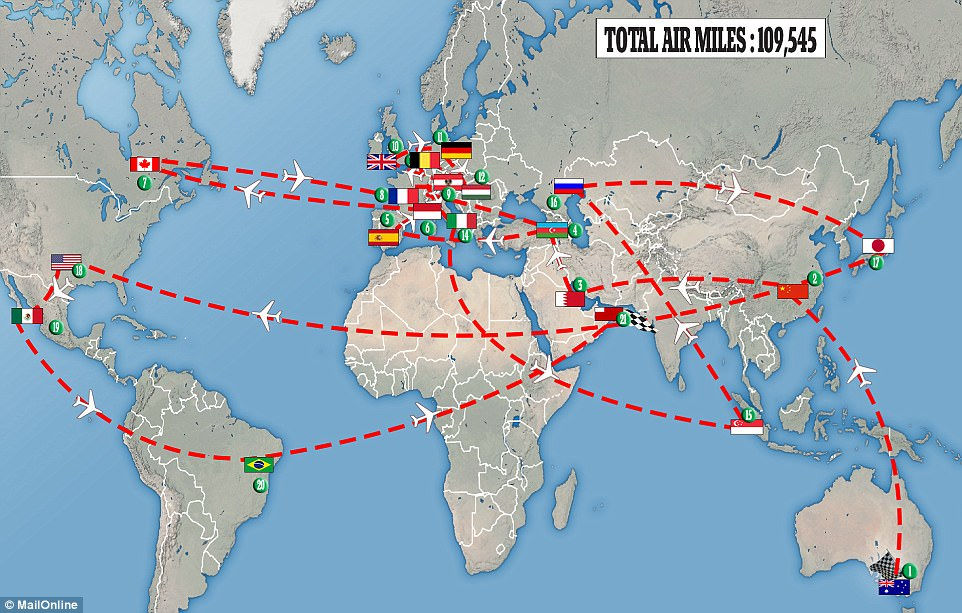The future of sport is sustainable
- Science-by-Trianon

- Jan 31, 2021
- 5 min read
Updated: Apr 10, 2021
Sports is one of mankind's greatest pastimes.
However, its environmental impact is far from negligible, sometimes due to the activity itself (motor racing) but mostly because of its nomadic nature.
How so and what is being done about it?

American Football
An awakening
Ahhh... Saturday evening, a beer, some crisps and the sport programme.

Beer and Crisps
For millions of people worldwide this is a much cherished weekly feature.
The product we consume does, however, have a carbon footprint.
Consider this:
The top tier leagues in Europe (loosely defined here as the EU plus the UK, plus Norway, plus Turkey) [1] contain 437 clubs. And we are only talking about male teams here.
An odd number? Yes, for reasons beyond our understanding the Turkish Süper Lig contains 21 teams (and is thus the biggest league in this list).

Goal keeper
That means, every match day 218 teams (consisting of 11 plus a few players, plus coaches, plus medical staff etc.) have to travel from their home town to wherever it happens to be they have to play that day.
In geographically smaller countries such as Luxembourg this distance may be small and easily traversed by bus, in geographically larger countries such as Spain the entourage might have to take the plane.
And that's just the top leagues, in many countries, football is organised in more than one nationwide tier.
Then there are other sports as well such as handball, bicycle racing, basketball, ice-hockey, tennis, snooker, motor-racing and in all sports it is a whole smaller or larger entourage for every contender (be it an individual or a team) that is travelling around.
Motor-racing is a particularly important example because their equipment burns fossil fuels (formats such as Formula E obviously excepted).
However, the CO2-footprint of Lewis Hamilton's, Sebastian Vettel's and all their colleagues' cars is simply negligible compared to the CO2-footprint of having to haul the cars, the rest of the equipment (basically entire workshops), and every team's entourage halfway around the globe every two weeks.[2]

By way of an example, the 2021-22 Formula 1 calendar contains 23 races in various countries in Asia, Europe, and North- and South-America, and there are 10 teams of 2 drivers each competing for the glory, i.e. 460 hauls of several dozens of tons of equipment over the racing year. A more detailed investigation can be found here.[3]
And this is only the supply-side. Fans travelling to various sporting events obviously generate emissions too, and that is not even looking at the foot print of the events themselves, for instance the whole hospitality industry around them.

Formula 1 Flight Route
What is being done about it?
An in-depth analysis of the greening/green-washing activities of the various sports circuses is very much outside the scope of this article. This is just a brief look at the environmental strategies of both football and motor-racing.
Football
We live in times in which no relevant player in the economy can exist with a sustainability strategy and football clubs are no exception.
We cannot judge the efforts of every single club in every single league, however, all major clubs we looked at (that is, in the English Premier League and in the German Bundesliga) make some soft of effort in greening up their operations.
According to a study by Deloitte, the activities found most often are: Using LED lights, implementing reusable plastic beakers for beverages, using well water for irrigation purposes, and installing photovoltaic cells on their roofs.[6]
The study also predicts an increasingly integrated approach to sustainability across all levels of operation and points out that football clubs are in a uniquely advantageous position to do so because due to their role in society they can open rooms for discussions, exchange, and networking.
Motor-racing
Motor-racing comes in two varieties, traditional, internal combustion-based engines on the one hand and fully electrical engines in the other.
So far, the PR-efforts in world of motor-racing (both traditional and electric) seem to concentrate on the efficiency of their respective engines and both sides have good technical arguments.
The representatives of Formula E argue that the batteries of their cars are charged by generators running on glycerine. In addition to that, they 'greened up' their events to such an extent that received an ISO 20121 certification.[4]
Formula 1, on the other, seems to be lagging behind, however, they have launched an initiative to be carbon-neutral by 2030.[5]
Formula1's principle environmental argument is the efficiency of their engines.

Formula One Racing
The regulations of Formula1 stipulate that all cars have to have the same fuel consumption, i.e. 100 kg per hour.
Thus, in order to go faster, they cannot burn more fuel, they have to burn the fuel more efficiently.
While the fuel efficiency of a Formula1 race car is, of course, way out of reach for normal cars, some of the innovations found in motor-racing have found their way into normal cars as well and have thus reduced the environmental impact of driving a 'normal' car – aerodynamics, hybrid engines, etc.
The hybrid engine is a particularly important point for Formula1 CEO Chase Carey: “Electric's going to be part of the solution, but they've got their own issues, whether it's economics or batteries or what have you.
There's a lot of issues around it. We think the hybrid engine in many ways can be one of the most important, if not the most important, component of addressing climate change.”[2]
In a word, the motor-racing world sees the knock-on effects of their technology as their contribution to sustainability.
While improvements to engine efficiency in motor-racing itself and the wider world are welcome, it does not change the CO2-footprint of the travelling circus as such.
Formula1 has announced a sustainability initiative.
It aims at reducing their carbon footprint to 0 by 2030, both that of the race cars themselves and that of the logistics, manufacturing, and events.
Football, motor-racing, or any other kind of sport: We are looking forward to reading their progress reports.
E-sport? The future of sport?

E-players
Afterthought: E-Sports is becoming more and more popular, with dedicated arenas[7] and a turn-over of billions of Dollars.[8]
Is that the future of sports as we know it?
This questions is easily answered: Certainly not!
All sports ultimately derives from physical competition, even chess.
That is not to say that E-Sports has no place and is just a fad, but physical competition is something so deeply ingrained in our human nature that it will always hold such an appeal that people will want to see other people competing in whichever activity it is they are doing.
Will it be environmentally advantageous?
E-Sports tournaments are almost always physical events which occur in front of a live audience.[9] and it is turning into the same travelling circus as traditional sports.

Video game tournament
Like in traditional sports, the number of fans attending the actual events is small by comparison with those watching it on TV or streamed, nonetheless the sustainability of these events needs to be assessed according to the same standards as any other event.
Also, the server farms behind these events consume a fair bit of energy as well – it would then depend on how these servers are powered.[10]
Either way, the world of sports bears the same environmental responsibility as all other fields of human endeavour and it is up to us as conscientious consumers to make sure the organisers don't forget it.
[1] https://www.kicker.de/fussball-international/wettbewerbe, and links therein, last accessed 29.01.'21
[2] https://www.espn.com/f1/story/_/id/28395224/the-environment-pose-f1-biggest-challenge-2020s, last accessed 29.01.'21
[3] https://www.dailymail.co.uk/sport/formulaone/article-4621550/Formula-One-teams-clock-whopping-air-miles-2018.html, last accessed 29.01.'21
[4] https://en.wikipedia.org/wiki/ISO_20121, last accessed 30.01.'21
[5] https://corp.formula1.com/wp-content/uploads/2019/11/Environmental-sustainability-Corp-website-vFINAL.pdf, last accessed 30.01.'21
[6] https://www2.deloitte.com/de/de/pages/technology-media-and-telecommunications/articles/nachhaltigkeit-bundesliga.html, last accessed 30.01.'21
[7] https://venturebeat.com/2017/04/11/las-vegas-will-get-its-own-esports-arena-at-the-luxor-hotel/, last accessed 31.01.'21
[8] https://fortune.com/2015/10/28/global-esports-revenues-nearing-2-billion/, last accessed 31.01.'21
[9] https://en.wikipedia.org/wiki/Esports, last accessed 31.01.'21




Comments